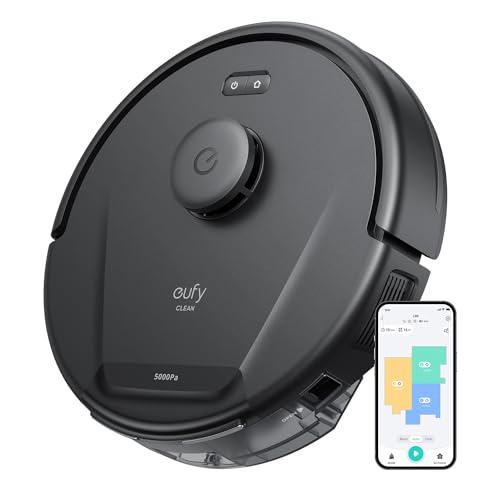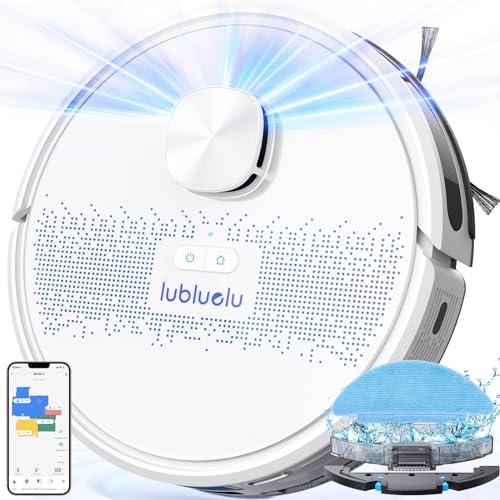 Lidar Technology Is a Game Changer For Robot Vacuums
Lidar Technology Is a Game Changer For Robot Vacuums
Lidar technology is an exciting development in the field of robot vacuums. It helps the vacuum robot lidar navigate and map the space with precision and accuracy.
When purchasing an industrial robot for a large home it is important to consider the Lidar feature is also an important one to consider. It will help the vacuum robot avoid pulling cords from furniture legs, window blind cords or power cords.
Furniture Friendly
Furniture can be seriously damaged by robot vacuum with lidar and camera vacuums that move in straight lines until they hit walls. They may scratch or scratch the flooring surface of hardwood or paint on soft wood furniture or damage the varnish on furniture that is mounted on risers.
Some of the latest robotic vacuums make use of digital maps to ensure that they do not run into furniture and obstacles. This technology enables the robot to create an internal map of your space, updating the map as furniture moves or new areas are explored.
Bumpers that connect to the robot’s base and sides are another way to safeguard furniture. The bumpers keep the robot from rubbing furniture, and can also provide some protection for furniture that is delicate like marble tables or chair upholstered with. Certain robots also have the option to set up virtual barriers in their apps, which instruct the robot to stay anywhere you want it to avoid, a feature known as no-go zones. They are helpful in areas with lots of cords, like behind the entertainment center or computer where the robot could get tangled in them.
You can also take preventative measures by making sure that your robot doesn’t run into drawers or cabinets where small items like screws and nails could be tucked away. It is also important to regularly empty and wash the dust bin if your robot has one. Clean its cameras and sensors if necessary to keep them free of dust and dirt.
Keeping your furniture safe from damage caused by robots is simple if you take the appropriate precautions. Choose a robot that uses digital mapping to prevent damage to furniture. Invest in bumpers when you have furniture that is delicate. If you have to use a robot in a large open space with lots of furniture and a lot of space, you should choose an option with a long-lasting battery as well as an ample dust bin so that it can finish the job without needing to recharge multiple times.
Adjustable Suction Power Adjustable
The most effective robot vacuums come with powerful motors and filtration systems that offer superior suction power. They are also designed to be quiet, so that you do not disturb your pets or family members while they are working. They also have features such as intelligent mapping and zone-cleaning to help them be more efficient in navigating furniture.
Lidar technology is a game-changer in robotic vacuums and mops because it allows them to navigate more effectively and precisely. Lidar technology utilizes laser beams to map the environment, unlike ‘Bump and run’ models which depend on physical contact. The sensors monitor how long it takes for the lasers to bounce off objects before returning to them, allowing robots to create precise maps of the space. Lidar maps are helpful for smart cleaners that can avoid obstacles and work best in low light environments where sensors and cameras can struggle.
ECOVACS has incorporated lidar mapping robot vacuum into all of its premium robots including the X1 OMNI which is an all-in-one. It utilizes a patent-pending laser sensor and SLAM technology (Self-Localization Mapping) to create a 3D map as it cleans. This allows it to avoid furniture, obstacles and other obstacles. This lets the X1 OMNI to give you an all-encompassing consistent, thorough clean of your whole house, without any user intervention. It comes with two tanks of water that allow it to clean up to 1.5 hours per time. It also has a powerful motor that can handle 5,000Pa suction.
Lidar is a game changer in robotic mop mops. It lets X20 OMNI to deliver a stunning clean on both hard floors and carpets. This model is a premium version that comes with a brand new generation of automatic mop lift that operates effortlessly on hard floors. It is powered by patented OZMO ™ turbo spinner that can rotate up to 180 times per minute, providing amazing scrub capabilities. Its all-in-one OMNI station is simple to use, featuring an integrated YIKO voice assistant as well as an intuitive touchscreen that allows hands-free control. It can be used to separate clean and dirty water, refill and quickly dry the mop, and even automatically empty the dust bin and return to its base charger station when it’s full.
Advanced Mapping and Navigation
Lidar is a technology for laser sensing which uses light beams to measure distance. The beams bounce off of obstacles and surfaces, and return to the sensor. This lets the robot create an accurate map of its surroundings in real time. The robot can avoid hitting walls, furniture, rugs, and other objects when cleaning. In comparison to other obstacle detection sensors, like infrared or ultrasonic, lidar is faster, more accurate and has greater range of effectiveness.
SLAM (Simultaneous Localization and Mapping) and other localization and navigation algorithms can aid lidar-based systems in navigating a home more efficiently than gyroscopes or accelerometers, especially in low light conditions. These capabilities of navigation allow the robot to better understand its surroundings and devise a more efficient cleaning route.
These advanced mapping features may not be necessary for every vacuum, but they can have a significant impact on the performance of your robot and how quickly it What is lidar navigation robot Vacuum (willysforsale.com) able to complete the job. A vacuum with mapping capabilities can complete an area faster than models that don’t have it, and it can stop multiple collisions that could waste energy or damage furniture and the vacuum.
In addition to mapping, some robots with lidar sensors also have built-in bumper sensors that can detect when they hit furniture or other obstacles. These sensors could cause the vacuum to stop and retract its brush, thereby preventing damage. They can also help the robot to get back to its dock for charging if it gets stuck in the corner.
Some models also come with anti-collision sensors, which can detect whether the robot is crashing into walls or furniture as it moves around the room. The AVE-L10, for instance makes use of this technology to stop the vacuum from falling off steps or stairs and reduce the chance of collisions with furniture or walls.
Other technologies can also help with navigation, such as cameras and gyroscopes. These systems are usually cheaper, but they are not as effective as Lidar. They may also be difficult to identify certain landmarks under various lighting conditions.
Edge Detection
Lidar maps an area, which includes the distances of objects. This allows the robot to know where to go in the room so that it doesn’t spend time cleaning under a couch or in your shoes, for instance. It also helps avoid bumping against furniture or other obstacles at night. In our testing, robots that use lidar are less likely to get stuck on obstacles than those with traditional sensors such as ultrasonic and infrared.
Many vacuum robots also utilize sensors to protect them from falling down stairs. They’re usually on the bumpers of the robot and function by reflecting infrared light back to the sensor. When the sensor detects an object that is too close, it tells the vac to change its course.
Most robots also come with several other sensors to help them navigate their way around the house. Certain models come with obstacle sensors that use an incline wheel or beam of light to determine when the robot vacuum lidar is near an obstacle. These sensors are more effective in detecting large objects, like shelves or legs for furniture and are less effective at detecting small objects like socks or rug tassels.
For advanced mapping and navigation seek out a robot that utilizes SLAM (Simultaneous Localization and Mapping). SLAM creates an interactive map of the surrounding by using cameras, which allows it to better understand where the robot is at any given moment and form an logical cleaning path. It is recommended to select a robot that has this technology since it will help you avoid a lot of frustration.
 Many robotic vacuums come with gyroscopes to keep them from bumping into obstacles. They can also give a more precise view of the room using an app, which allows you to establish no-go zones and clean by space.
Many robotic vacuums come with gyroscopes to keep them from bumping into obstacles. They can also give a more precise view of the room using an app, which allows you to establish no-go zones and clean by space.
While a vacuum machine with gyroscopes as well as SLAM is typically more efficient than one without these technologies, you may still encounter occasional issues. Try out a variety of models to determine which one provides the best navigation.
